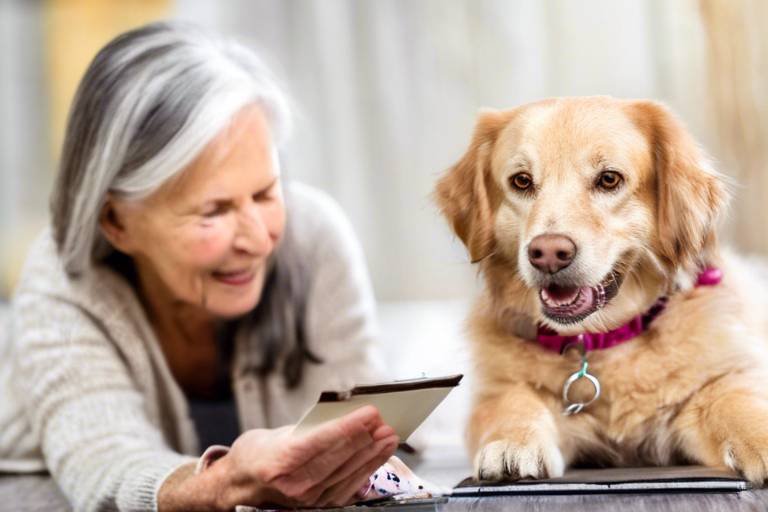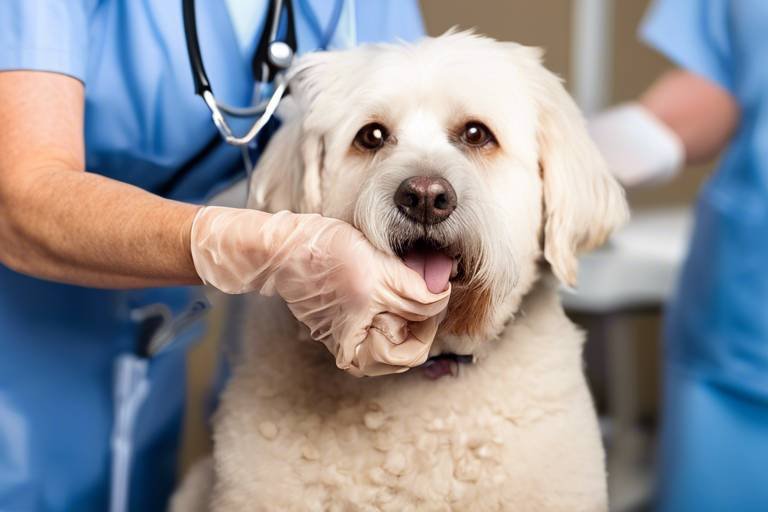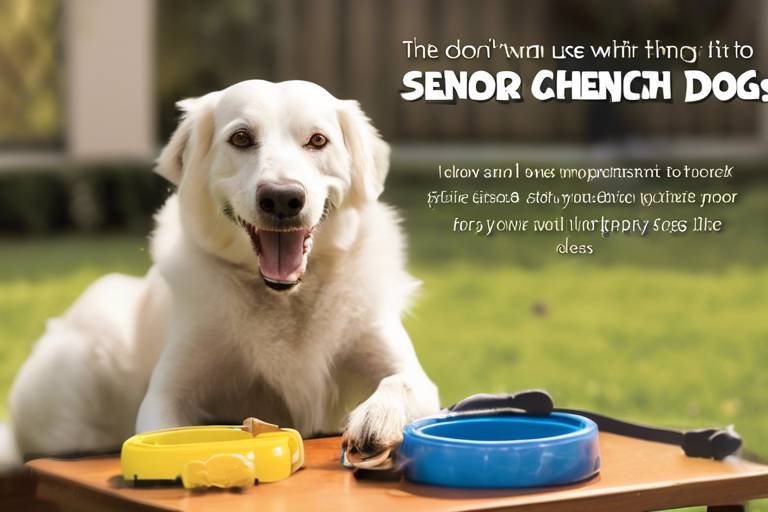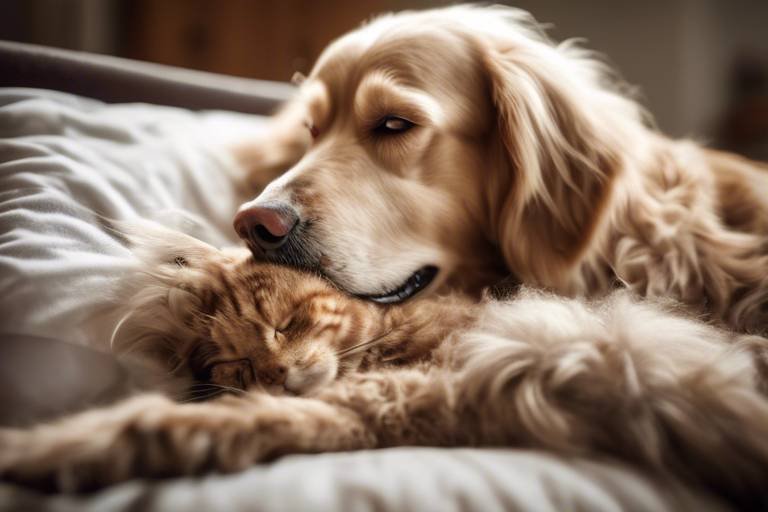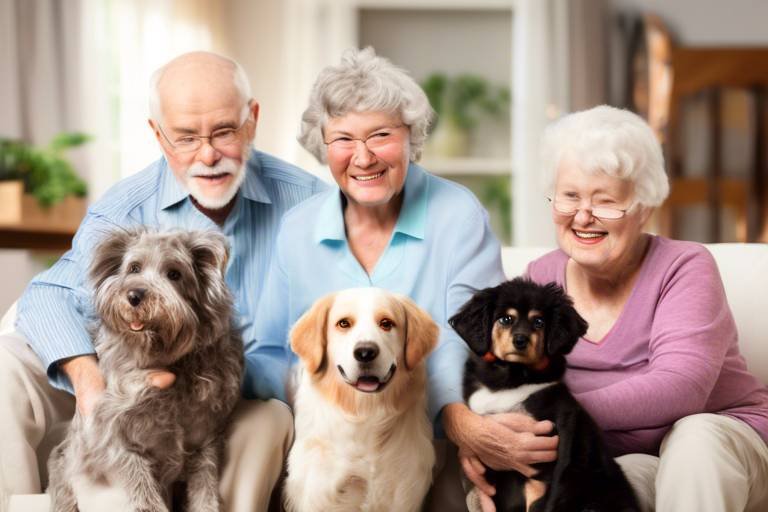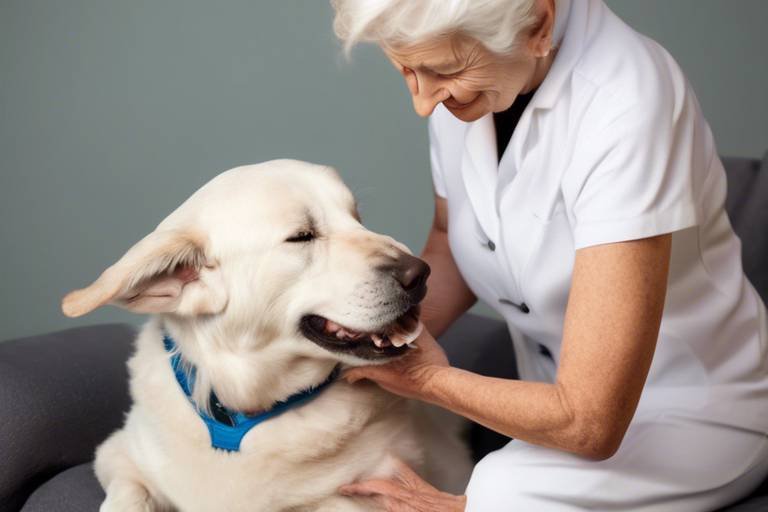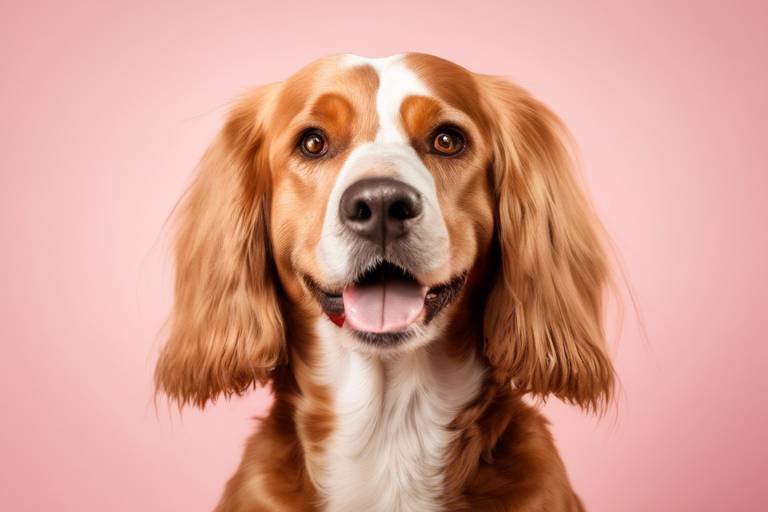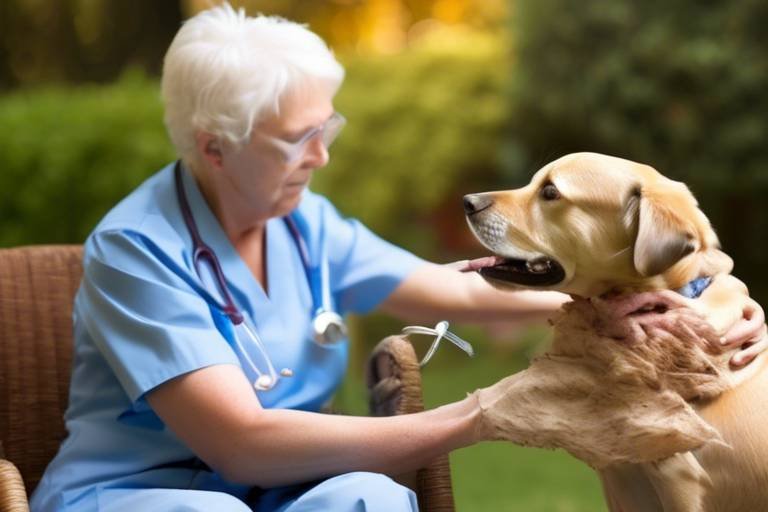The Role of Grooming in Senior Pet Care
As our furry friends age, their needs evolve, and grooming becomes a vital aspect of their overall care. Imagine your beloved pet, once sprightly and full of energy, now moving a bit slower and requiring extra attention. This transition can be tough, but with the right grooming routine, you can significantly enhance their quality of life. Regular grooming isn't just about keeping your pet looking good; it's about fostering their health and comfort during their golden years. It’s like giving them a mini spa day that can help them feel rejuvenated and loved.
Grooming plays a crucial role in identifying health issues before they escalate. For instance, while brushing your senior pet, you might notice lumps, bumps, or skin irritations that require veterinary attention. This proactive approach can be a game-changer, ensuring that any potential problems are addressed promptly. Moreover, grooming sessions can be a wonderful bonding experience for you and your pet. It’s not just a chore; it’s an opportunity to show them love and care, strengthening your relationship.
In the following sections, we will dive deeper into the specific needs of senior pets, the myriad benefits regular grooming offers, and practical tips on how to make the grooming experience as enjoyable as possible for both you and your furry companion. So, grab your brushes and let’s get started on this journey to better pet care!
As pets age, their grooming needs change significantly. Understanding these changes is crucial for maintaining their health and comfort, ensuring they receive the care they require during their golden years. Senior pets often experience a decline in mobility, skin sensitivity, and changes in their coat texture. This means that the grooming tools and techniques that worked wonders when they were younger may no longer be appropriate. It's essential to adapt your grooming routine to cater to their evolving needs.
Furthermore, older pets may become more anxious or sensitive during grooming sessions. This is where patience and gentleness come into play. Always remember, grooming is not just a physical necessity; it's also an emotional one. A calm, reassuring environment can make a world of difference for a senior pet. Think of it as creating a safe haven where they can relax and enjoy the pampering.
Regular grooming offers numerous benefits for senior pets, including improved skin health, enhanced mobility, and reduced risk of health issues. This section delves into how grooming can positively impact their quality of life. For starters, grooming helps to remove dead hair and skin, preventing matting and skin irritations. A healthy coat is vital for temperature regulation and overall comfort in senior pets.
Grooming not only maintains a pet's appearance but also promotes their skin and coat health. A shiny coat is often a sign of good health. Grooming promotes natural oil distribution, enhancing the coat's appearance and providing a protective barrier against environmental factors. Regular brushing helps to stimulate blood flow to the skin, ensuring that nutrients are delivered effectively.
Older pets are more prone to skin conditions. Regular grooming can help identify and manage these issues early, ensuring prompt veterinary attention and better health outcomes. For instance, if you notice excessive scratching or unusual patches on their skin, these could be signs of allergies or infections. Early detection is key!
To maintain a shiny coat, consider using grooming products specifically designed for senior pets. These products can help mitigate the effects of aging on their coat and skin, ensuring they remain comfortable and healthy. A shiny coat not only looks good but also reflects the overall well-being of your pet.
Grooming not only aids in physical health but also enhances comfort. Regularly brushing and bathing can help alleviate discomfort associated with arthritis and other mobility issues in senior pets. Think of grooming as a gentle massage that can soothe sore muscles and improve circulation. It’s a way to show your pet that you care about their comfort and well-being.
Using the right tools and techniques is essential for effective grooming. This section covers recommended tools and best practices tailored for senior pets, ensuring a stress-free grooming experience. Choose brushes that are gentle on their skin, and consider using a soft bristle brush or a grooming glove for pets with sensitive skin.
Selecting appropriate brushes can make a significant difference in grooming effectiveness. For instance, a slicker brush is great for removing tangles, while a bristle brush can help distribute natural oils. Always choose brushes that are suitable for your pet's specific coat type and condition.
Bathing senior pets requires special attention to their skin sensitivity. Use lukewarm water and gentle, hypoallergenic shampoos to avoid irritation. Always rinse thoroughly to ensure no product residue remains, as this can lead to skin issues. Consider wrapping your pet in a warm towel after their bath to keep them cozy and relaxed.
For some senior pets, professional grooming services may be beneficial. This section discusses when to consider professional help and what to look for in a grooming service for older pets. If your pet has mobility issues or is particularly anxious, a professional groomer with experience in handling senior pets can provide the extra care they need.
Not all groomers specialize in senior pets. Look for groomers who are experienced in handling the unique needs of older animals. Ask about their techniques and ensure they understand how to work with pets that may have special requirements.
Grooming costs can vary significantly. This section breaks down potential expenses associated with grooming senior pets and provides tips for budgeting effectively while ensuring quality care. Always consider the long-term benefits of regular grooming, as it can prevent more costly health issues down the line.
Q: How often should I groom my senior pet?
A: The frequency of grooming depends on your pet’s breed, coat type, and health condition. Generally, brushing a few times a week and bathing every month is a good rule of thumb.
Q: What if my pet doesn't like being groomed?
A: Start slowly and gradually introduce grooming sessions. Use treats and praise to create a positive association with grooming.
Q: Are there specific products I should use for senior pets?
A: Yes! Look for gentle, hypoallergenic shampoos and brushes designed for sensitive skin. Always consult with your vet for recommendations.
Q: Can grooming help with my pet's arthritis?
A: Yes! Gentle grooming can help improve circulation and provide comfort to pets suffering from arthritis.
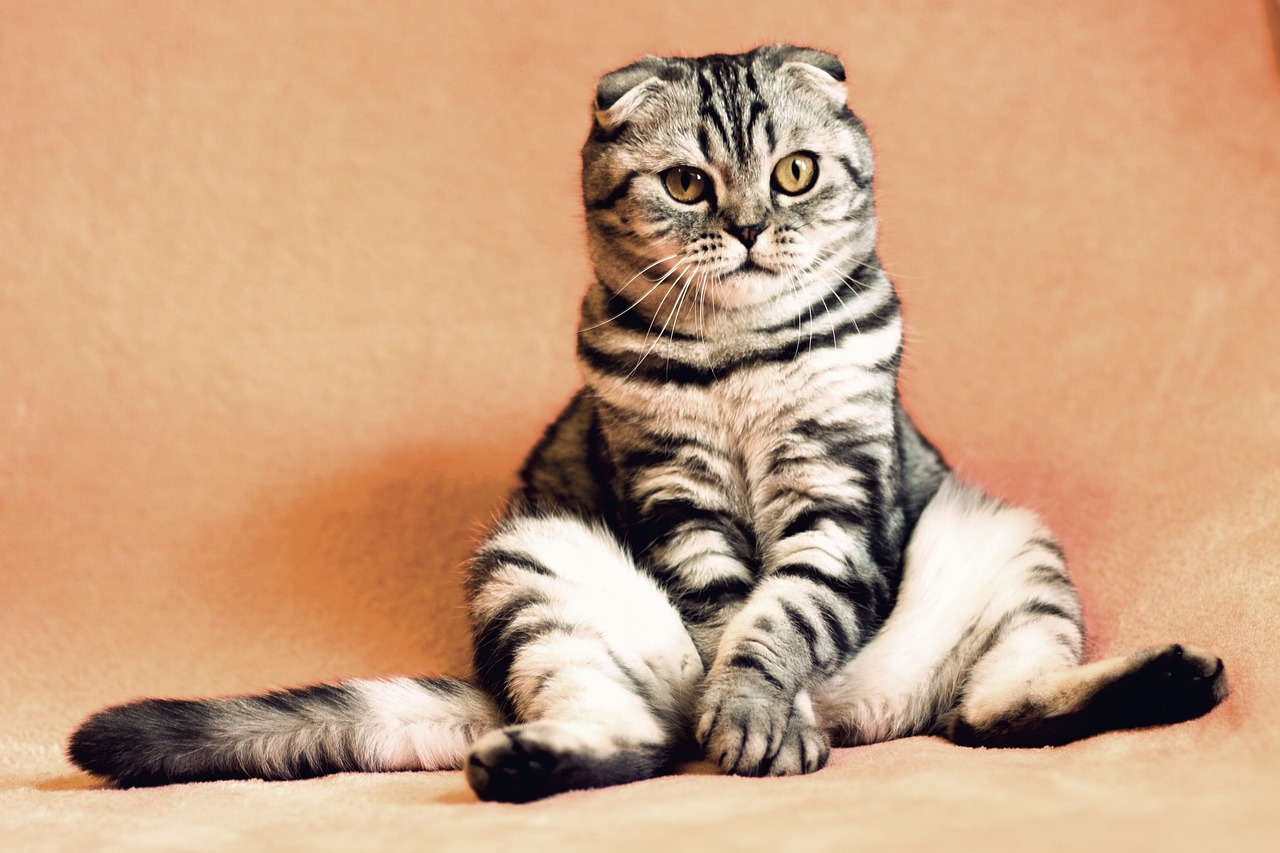
Understanding Senior Pet Needs
As pets gracefully age, their needs evolve in ways that can surprise even the most seasoned pet owners. It's not just about watching their grey hairs multiply or noticing that they nap more often; the grooming requirements of senior pets shift significantly. Understanding these changes is crucial for maintaining their health and comfort, ensuring they receive the care they require during their golden years. Just like how we adapt our routines as we age, our furry companions need a little extra attention too.
One of the most notable changes is the decline in their mobility. Senior pets often experience conditions like arthritis, making it uncomfortable for them to maintain their usual grooming habits. This means that pet owners must step in to help keep their beloved companions looking and feeling their best. Regular grooming not only helps with their appearance but also serves as a preventive measure against various health issues. Think of grooming as a gentle reminder to check in on their physical condition—it's a chance to spot any abnormalities or discomfort before they escalate.
Moreover, senior pets tend to develop more sensitive skin. Just like humans, their skin loses elasticity, and they may become prone to irritations or conditions that require immediate attention. Grooming becomes a way to assess their skin health and identify any potential issues early on. A simple brush can reveal a lot about their overall well-being. For instance, if you notice excessive flaking or redness, it might be time to consult your vet.
In addition to skin sensitivity, older pets often have a harder time regulating their body temperature. A well-groomed coat can assist in maintaining their comfort levels. For example, a fluffy coat can trap heat in colder months, while a well-maintained short coat can help them stay cool during the summer. Keeping their coat clean and free from mats not only enhances their appearance but also plays a vital role in their thermoregulation.
Lastly, the psychological aspect of grooming cannot be overlooked. Senior pets may experience anxiety or stress as they age, and familiar grooming routines can provide a sense of comfort and normalcy. The bond created during grooming sessions can be incredibly fulfilling for both pet and owner. It’s a time to connect, reassure, and pamper them, which is just as important as the physical benefits. So, whether you're brushing their fur or giving them a gentle bath, remember that these moments are about more than just cleanliness—they're about love and care.
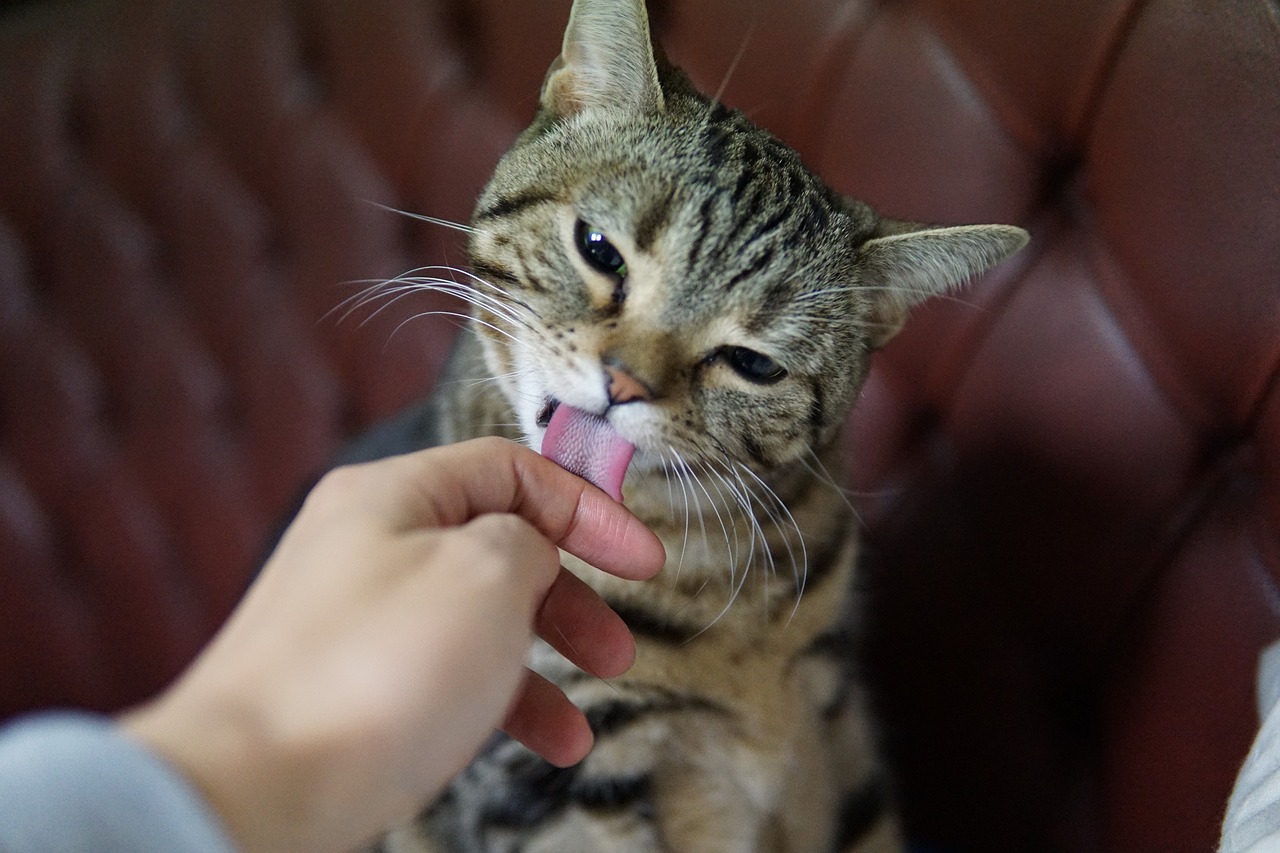
Benefits of Regular Grooming
When it comes to our beloved senior pets, grooming is not just about keeping them looking good; it plays an essential role in their overall health and well-being. Regular grooming can be a game changer, offering a multitude of benefits that can enhance the quality of life for our furry friends in their golden years. Think of grooming as a way to pamper your pet while simultaneously providing necessary health care. Just like how we feel rejuvenated after a good haircut or spa day, our pets can experience similar benefits.
One of the most significant advantages of regular grooming is improved skin health. As pets age, their skin can become more sensitive and prone to issues such as dryness or irritation. Regular brushing helps to remove dead hair and skin, which can prevent matting and minimize the risk of skin irritations. Additionally, a well-groomed coat aids in temperature regulation, ensuring your senior pet stays comfortable regardless of the weather. Imagine wearing a thick, tangled sweater on a hot day—your pet feels the same way with an unkempt coat!
Moreover, grooming can enhance your pet's mobility. For senior pets, especially those suffering from arthritis or other mobility issues, regular brushing and bathing can alleviate discomfort. Gentle grooming can stimulate circulation and keep their joints more flexible, making it easier for them to move around. Just as a good stretch can relieve stiffness in humans, grooming can provide similar relief for our four-legged companions.
Another benefit of grooming is the early detection of health issues. During grooming sessions, pet owners have the opportunity to closely examine their pets for any unusual lumps, bumps, or skin conditions. Identifying these issues early can lead to prompt veterinary care, which can significantly improve health outcomes. It’s like a mini health check-up that you can do in the comfort of your own home!
Additionally, a shiny coat is often a sign of good health. Grooming promotes the natural distribution of oils in your pet's fur, enhancing its appearance and providing a protective barrier against environmental factors. A shiny coat not only looks great but also indicates that your pet is healthy and happy. Think of it as a badge of honor that showcases their vitality!
In conclusion, regular grooming is vital for senior pets, offering numerous benefits that extend beyond mere aesthetics. It enhances skin and coat health, improves mobility, aids in the early detection of health issues, and contributes to overall comfort. By incorporating regular grooming into your senior pet's routine, you are not just maintaining their appearance; you are actively contributing to their quality of life. So, grab that brush and make grooming a delightful bonding experience for both you and your furry friend!
- How often should I groom my senior pet? It depends on the breed and coat type, but generally, brushing several times a week is beneficial.
- What tools are best for grooming senior pets? Look for soft brushes and grooming tools designed specifically for sensitive skin.
- Can grooming help with my pet's anxiety? Yes, grooming can be a calming experience for pets, helping to reduce anxiety and stress.
- Should I consider professional grooming for my senior pet? If your pet has mobility issues or requires specialized care, professional grooming may be a good option.
Skin and Coat Health
When it comes to our beloved senior pets, maintaining their is a vital aspect of their overall well-being. As pets age, their skin becomes thinner and less elastic, making them more susceptible to irritations and conditions that can lead to discomfort. Regular grooming plays an essential role in addressing these issues, helping to keep their skin healthy and their coat shiny. Just like how we might need a little extra care as we age, our furry friends require the same level of attention.
One of the primary benefits of grooming is its ability to remove dead hair and skin, which can accumulate and cause matting. This matting can trap moisture and dirt, leading to skin irritations and infections. By regularly brushing your senior pet, you not only keep their coat looking neat but also promote better air circulation to the skin, which is crucial for maintaining its health. A well-groomed coat aids in temperature regulation, ensuring that your pet stays comfortable, whether it’s a hot summer day or a chilly winter night.
Moreover, grooming allows pet owners to check for signs of skin issues early on. Common conditions such as hot spots, rashes, or even lumps can be detected during grooming sessions. Early detection means you can seek veterinary care sooner, which can lead to better health outcomes for your pet. For instance, if you notice your dog scratching more than usual, it might be a sign of allergies or parasites. By addressing these issues promptly, you can alleviate your pet's discomfort and prevent further complications.
Additionally, a shiny coat is often a reflection of good health. Regular grooming helps distribute natural oils throughout the coat, enhancing its appearance and providing a protective barrier against environmental factors like dirt, dust, and allergens. Think of it as giving your pet a natural armor that not only looks good but also protects them from potential irritants. The act of grooming can also be a bonding experience, allowing you to spend quality time together while ensuring they feel loved and cared for.
In conclusion, the importance of grooming for senior pets cannot be overstated. It not only helps maintain but also fosters a deeper connection between you and your furry companion. By incorporating regular grooming into your senior pet's routine, you are investing in their comfort, health, and happiness during their golden years.
- How often should I groom my senior pet? It depends on the breed and coat type, but generally, brushing a few times a week is beneficial.
- What tools are best for grooming? Use brushes suitable for your pet's coat type, such as slicker brushes for long-haired pets or bristle brushes for short-haired ones.
- Can I bathe my senior pet regularly? Yes, but use gentle, hypoallergenic shampoos and ensure the water temperature is comfortable.
- What signs should I look for that indicate skin problems? Look for excessive scratching, redness, lumps, or any unusual odor coming from your pet's skin.
Dealing with Skin Conditions
As our beloved pets age, they often become more susceptible to various skin conditions that can cause discomfort and distress. It's essential for pet owners to be vigilant and proactive in addressing these issues. Regular grooming plays a pivotal role in this process, acting as the first line of defense in identifying potential skin problems before they escalate. For instance, during grooming sessions, you might notice redness, bumps, or excessive scratching that could indicate underlying issues such as allergies, infections, or even parasites.
One of the most common skin conditions in senior pets is dermatitis, which can arise from various sources, including environmental allergens or irritants. Regular grooming helps to remove allergens like pollen and dust from the coat, minimizing exposure and potential reactions. Additionally, grooming allows for the early detection of skin infections, which are more prevalent in older pets due to their weakened immune systems.
To effectively deal with skin conditions, consider the following steps:
- Regular Inspections: During grooming, take time to inspect your pet's skin thoroughly. Look for any unusual changes, such as lumps, redness, or dryness.
- Consult Your Veterinarian: If you notice any persistent skin issues, consult your veterinarian for a proper diagnosis and treatment plan.
- Use Appropriate Products: Invest in grooming products designed specifically for senior pets. These products can help soothe sensitive skin and prevent irritation.
Moreover, maintaining a consistent grooming routine not only promotes skin health but also strengthens the bond between you and your furry friend. Think of grooming as a spa day for your pet, where they can enjoy the attention and care they deserve. By providing this regular attention, you're not just keeping their coat clean; you're also ensuring that they remain comfortable and happy in their golden years.
In summary, being proactive about your senior pet's skin health can lead to early detection and treatment of issues that could otherwise lead to more severe complications. Remember, a little love and attention go a long way in keeping your furry companion healthy and content!
Q: How often should I groom my senior pet?
A: It depends on the breed and coat type, but generally, senior pets should be groomed at least once a week to keep their skin and coat healthy.
Q: What signs should I look for that indicate my pet might have a skin condition?
A: Look for signs such as excessive scratching, redness, bumps, or changes in coat texture. If you notice any of these, consult your veterinarian.
Q: Are there specific grooming products recommended for senior pets?
A: Yes, look for gentle, hypoallergenic shampoos and conditioners specifically formulated for senior pets to avoid skin irritation.
Q: Can grooming help with my pet's arthritis?
A: Yes! Gentle grooming can improve circulation and provide comfort, helping to alleviate some discomfort associated with arthritis.
Maintaining a Shiny Coat
When it comes to our beloved senior pets, a shiny coat is like a badge of honor, signifying good health and vitality. Just as we take pride in our appearance, our furry friends deserve the same attention, especially as they age. Grooming plays a pivotal role in maintaining that radiant coat, but it’s not just about aesthetics; it’s about their overall well-being too. As pets grow older, their skin can become drier and less capable of producing natural oils, which are essential for a lustrous coat. By incorporating a regular grooming routine, you're not only enhancing their appearance but also contributing to their comfort and health.
One of the key aspects of maintaining a shiny coat is ensuring that your grooming routine is consistent. Regular brushing helps to distribute those natural oils evenly throughout the fur, which is crucial for keeping it healthy and shiny. Additionally, this process helps to remove dirt, debris, and dead hair, which can accumulate and lead to skin irritations. Think of it as giving your pet a mini spa day; they’ll feel refreshed and rejuvenated. However, it’s important to choose the right tools for the job. Not all brushes are created equal, and the type you use can make a world of difference. For instance, if your pet has a long, flowing coat, a slicker brush might be your best friend. On the other hand, for short-haired breeds, a bristle brush can do wonders.
But grooming isn’t just about the brushes; it’s also about the products you use. Opt for high-quality shampoos and conditioners that are specifically designed for senior pets. These products often contain moisturizing ingredients that can help combat dryness and promote a shiny coat. Always remember to rinse thoroughly to avoid any residue that could irritate their skin. It's like giving your pet a refreshing shower after a long day; they’ll come out feeling clean and looking fabulous!
Another essential factor in maintaining a shiny coat is a balanced diet. Just like us, what our pets eat plays a significant role in their coat's health. Foods rich in omega fatty acids, such as fish oil, can work wonders for their skin and coat. Consider discussing dietary adjustments with your veterinarian to ensure your senior pet is receiving the nutrients they need to keep their coat looking its best. You wouldn’t want to skimp on quality ingredients for your own meals, so why do it for your furry family member?
In summary, maintaining a shiny coat for your senior pet involves a combination of regular grooming, the right tools, quality grooming products, and a nutritious diet. By paying attention to these aspects, you’re not just enhancing their appearance but also promoting their overall health and happiness. Remember, a happy pet is a shiny pet!
- How often should I groom my senior pet? It depends on the breed and coat type, but generally, brushing at least once a week is recommended.
- What if my senior pet resists grooming? Try to make grooming a positive experience by using treats and gentle handling. If they continue to resist, consider consulting a professional groomer.
- Are there specific products I should use for senior pets? Yes, look for shampoos and conditioners that are formulated for sensitive skin and that contain moisturizing ingredients.
- Can diet really affect my pet's coat? Absolutely! A well-balanced diet with omega fatty acids can significantly improve your pet's coat health.
Mobility and Comfort
As our furry friends enter their golden years, their mobility can often decline, making it essential to focus on their comfort. Think of grooming as a gentle massage that not only helps keep their coat clean but also promotes better circulation and flexibility in their joints. Regular grooming sessions can be a wonderful bonding experience, allowing you to check for any signs of discomfort or pain that may not be immediately obvious. Imagine brushing your senior pet’s coat as a way to say, “I love you” while also keeping them healthy!
Many older pets suffer from conditions like arthritis, which can make even simple movements painful. By incorporating grooming into their routine, you can help alleviate some of this discomfort. For instance, using a soft brush can gently stimulate their skin and muscles, providing a soothing effect that can ease stiffness. Not only does this promote a sense of relaxation, but it also encourages them to be more active, which is crucial for maintaining their overall health.
When it comes to grooming techniques, consider the following approaches to enhance your senior pet's mobility and comfort:
- Gentle Brushing: Use a brush with soft bristles to avoid irritating sensitive skin, and take your time to ensure your pet feels relaxed.
- Shorter Sessions: Keep grooming sessions brief but frequent to prevent fatigue and discomfort. A 10-15 minute session can be perfect!
- Warm Baths: If your pet enjoys water, a warm bath can soothe aching muscles and joints, making them feel rejuvenated.
Additionally, consider the environment where you groom your pet. A comfortable, quiet space can significantly reduce stress during grooming. Using non-slip mats can also help your pet feel secure, especially if they have trouble standing. Remember, the goal is to create a positive experience that not only maintains their hygiene but also enhances their quality of life.
In summary, grooming is more than just a cosmetic endeavor for senior pets; it’s a vital component of their overall well-being. By prioritizing their mobility and comfort through thoughtful grooming practices, you can help ensure that their golden years are filled with joy and ease. After all, a happy pet is a healthy pet!
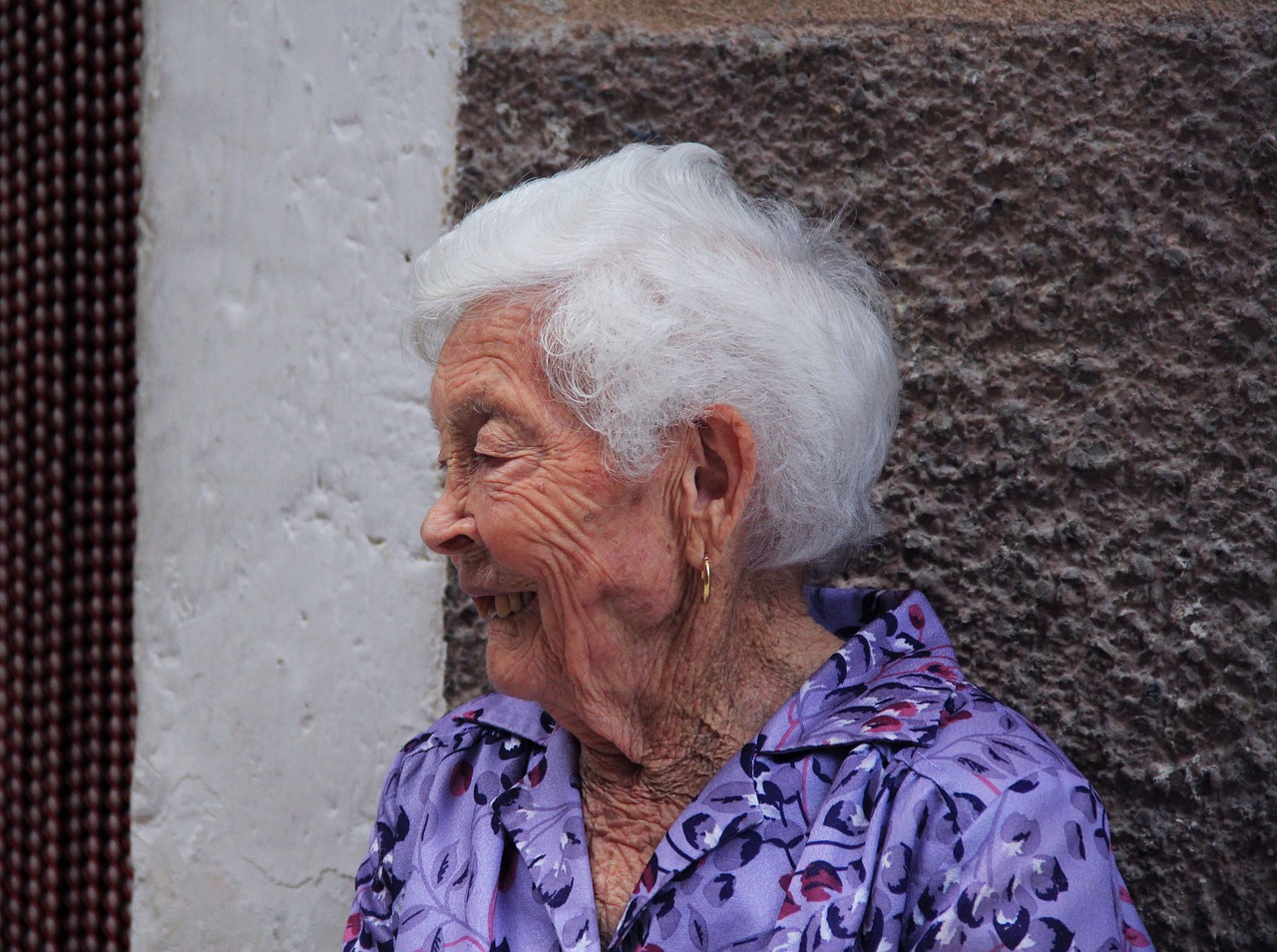
Tools and Techniques for Grooming
When it comes to grooming senior pets, having the right tools and techniques can make all the difference in ensuring a positive experience for both you and your furry friend. As pets age, their skin and coat may become more sensitive, so it’s essential to choose tools that cater to their specific needs. Think of grooming as a spa day for your pet—one that requires the right equipment to make it enjoyable and beneficial.
First and foremost, selecting the right brushes is crucial. Different coat types require different brushes, and senior pets often have unique grooming needs. For instance, a pet with a long, flowing coat may benefit from a slicker brush to detangle and remove loose hair, while a short-haired pet might do better with a rubber curry brush that stimulates the skin and promotes oil distribution. Here’s a quick overview of some common brush types:
| Brush Type | Best For |
|---|---|
| Slicker Brush | Long-haired breeds |
| Rubber Curry Brush | Short-haired breeds |
| Pin Brush | Medium-haired breeds |
| Undercoat Rake | Heavy shedders |
In addition to brushes, bathing techniques play a significant role in grooming senior pets. Older pets may have more sensitive skin, so it’s vital to choose gentle shampoos specifically formulated for their needs. Look for products that are free from harsh chemicals and fragrances. When bathing your senior pet, ensure the water temperature is lukewarm to avoid any discomfort. A soft sponge or cloth can be used to clean sensitive areas, and always rinse thoroughly to prevent any residue from irritating the skin.
Another important aspect of grooming is establishing a routine. Regular grooming sessions not only keep your pet looking good but also allow you to monitor their skin and coat health. During these sessions, pay attention to any changes in their skin, such as redness or lumps, which could indicate a need for veterinary attention. Think of it as a bonding time; your gentle touch can provide comfort and reassurance to your senior pet.
Lastly, consider the environment in which you groom your pet. A calm, quiet space is ideal for grooming sessions, as it reduces stress for both you and your pet. You might want to use a non-slip mat to prevent any slipping, especially for pets that may have mobility issues. Creating a safe and comfortable grooming space can make the process smoother and more enjoyable.
- How often should I groom my senior pet? - Ideally, you should groom your senior pet at least once a week, but this can vary based on their coat type and health condition.
- What tools do I need for grooming? - Basic grooming tools include brushes, combs, pet-safe shampoo, and nail clippers. You may also consider grooming gloves for a more gentle approach.
- Can I groom my senior pet at home? - Yes, many pet owners groom their pets at home. Just be sure to take your time and be gentle, especially if your pet has any mobility issues.
Choosing the Right Brushes
When it comes to grooming your senior pet, choosing the right brush is not just a matter of preference; it's a critical decision that can significantly impact their comfort and overall grooming experience. As pets age, their skin and coat undergo changes that require a more thoughtful approach to grooming. For instance, older pets often have more sensitive skin, and using the wrong brush can lead to discomfort or even skin damage. Therefore, understanding the different types of brushes available and their specific uses is essential.
First off, let’s talk about the different types of brushes you might consider:
- Slicker Brushes: These are excellent for removing tangles and mats, especially in long-haired breeds. The fine, short wires can penetrate deep into the coat, making them effective for thorough grooming.
- Bristle Brushes: Ideal for short-haired pets, bristle brushes help to distribute natural oils, promoting a shiny coat while also removing loose hair.
- Rubber Brushes: Great for pets with sensitive skin, rubber brushes are gentle and can be used for massaging your pet while removing loose fur. They can also be beneficial for stimulating blood circulation.
- Undercoat Rakes: For breeds with a thick undercoat, these rakes are essential. They help to remove dead hair from the undercoat without damaging the top coat.
It's also important to consider the size and grip of the brush. A brush that feels comfortable in your hand will make grooming a more enjoyable experience for both you and your pet. Look for ergonomic handles that provide a good grip, especially if you have a larger pet that requires more effort to groom. Additionally, brushes designed with soft edges can help prevent any accidental scratches or discomfort.
Another crucial factor is the frequency of grooming. Senior pets may require more frequent grooming sessions, especially if they are prone to matting or have health issues that affect their mobility. Regular brushing not only keeps their coat healthy but also provides a wonderful opportunity for bonding. Think of it as a mini spa day for your pet, where they get pampered, and you get to check for any skin issues or lumps that may need veterinary attention.
In conclusion, the right brush can make all the difference in your senior pet's grooming routine. By selecting a brush tailored to their specific needs, you can ensure that grooming is a positive experience that contributes to their overall well-being. Remember, a little extra care in choosing the right tools goes a long way in keeping your furry friend comfortable and happy.
Bathing Techniques
Bathing senior pets is not just a routine task; it's an essential part of their grooming regimen that requires a bit of finesse. As our furry friends age, their skin becomes more sensitive, making it crucial to adopt gentle bathing techniques that cater to their unique needs. First and foremost, it's important to choose a suitable shampoo. Opt for a hypoallergenic or oatmeal-based shampoo, as these are less likely to irritate their delicate skin. Always remember to test the water temperature before bathing; lukewarm water is ideal, as it mimics their natural body temperature and ensures comfort.
When it comes to the actual bathing process, patience is key. Start by wetting your pet gradually, allowing them to acclimate to the sensation of water. Use a cup or a gentle spray nozzle to avoid overwhelming them. Apply the shampoo gently, massaging it into the coat with your fingertips. This not only cleanses but also stimulates the skin, promoting circulation. Take care to avoid the eyes and ears, as water can cause discomfort and potential infections.
After rinsing thoroughly to remove all shampoo residue, it's time for drying. Older pets may not dry as quickly as they used to, so using a soft towel to gently pat them dry can help. If your pet tolerates it, a low-heat setting on a blow dryer can also be effective, but always keep it at a safe distance to prevent overheating. Finally, reward your pet with a treat or some extra cuddles to create a positive association with bath time. This can make future bathing sessions much easier!
In addition to the bathing process, consider the frequency of baths for senior pets. Unlike younger dogs, who may need baths every few weeks, older pets may only require bathing every few months, depending on their activity level and coat type. Overbathing can strip their skin of natural oils, leading to dryness and irritation. It's essential to monitor their coat and skin condition and adjust bathing frequency accordingly.
In conclusion, bathing senior pets is a delicate balance of care and technique. By using the right products, being gentle, and paying attention to their comfort, you can ensure that bath time is a pleasant experience for your furry companion.
- How often should I bathe my senior pet? It depends on their coat type and activity level, but generally every few months is sufficient.
- What type of shampoo is best for senior pets? Look for hypoallergenic or oatmeal-based shampoos that are gentle on their skin.
- Should I use a blow dryer on my senior pet? If your pet tolerates it, a blow dryer on a low-heat setting can help, but keep it at a safe distance.
- Can I bathe my senior pet if they have skin conditions? Consult your veterinarian for specific advice tailored to your pet's condition.
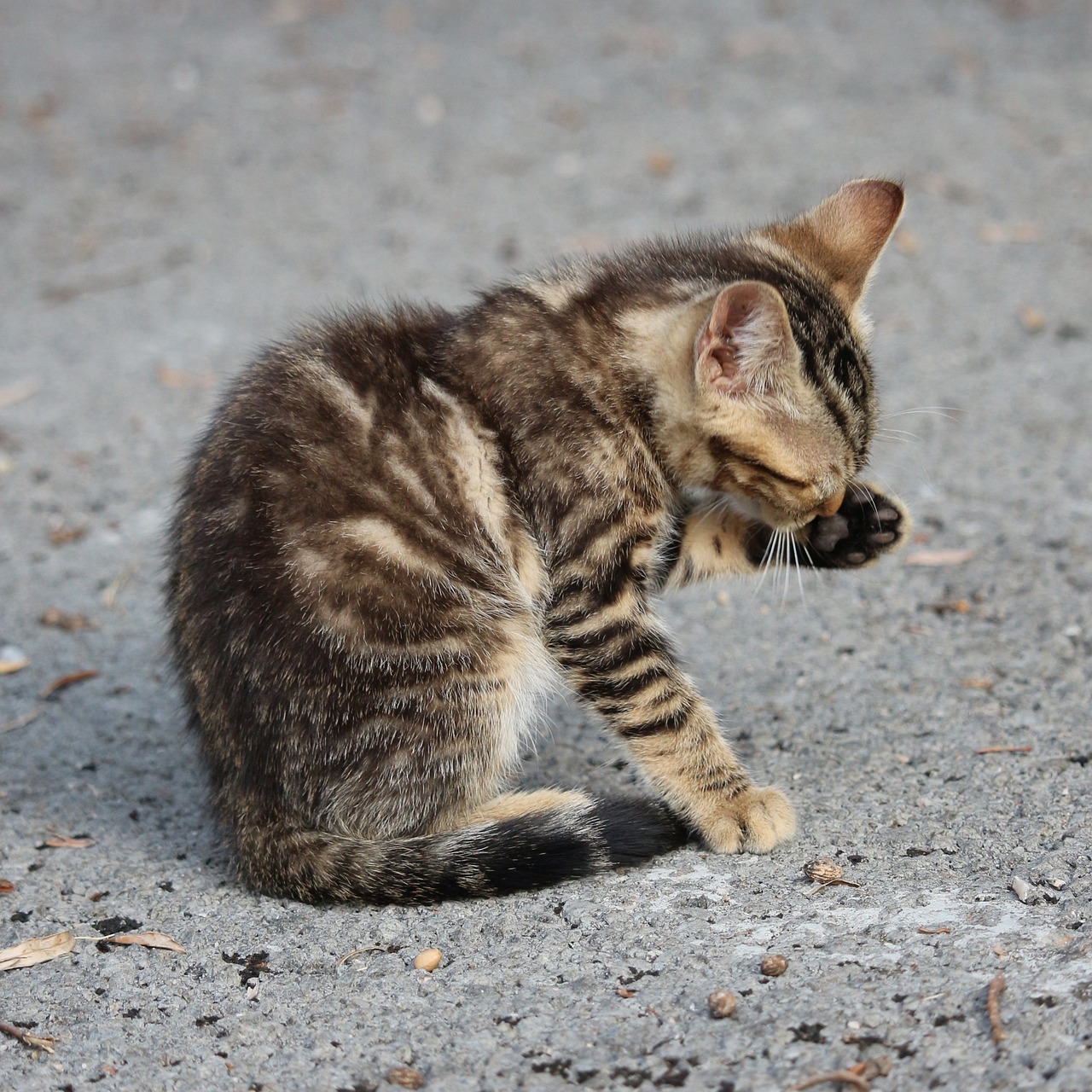
Professional Grooming Services
When it comes to our beloved senior pets, sometimes a little extra help is just what they need. Professional grooming services can be a lifesaver, especially for older animals who may struggle with mobility or have specific grooming needs that require expertise. Imagine trying to give your elderly dog a bath while they’re wincing in discomfort—it's a tough situation for both pet and owner! That’s where a professional groomer comes in, equipped not only with the right tools but also with the knowledge to handle your furry friend with care.
So, when should you consider seeking out professional grooming services for your senior pet? If your pet has long hair that tangles easily, suffers from skin conditions, or simply seems to dislike the grooming process at home, it might be time to call in the pros. Additionally, if your pet has mobility issues, a professional groomer can provide the gentle handling they need to ensure a stress-free experience. It’s all about making sure your pet feels comfortable and cared for during their grooming sessions.
But how do you find the right groomer for your senior pet? Not all grooming services are created equal, and some groomers specialize in handling older animals. Look for grooming facilities that advertise themselves as "senior-friendly" or have staff trained in geriatric pet care. You might want to ask friends for recommendations or check online reviews to gauge the experiences of other pet owners. Once you’ve found a potential groomer, don’t hesitate to visit the facility to see how they operate. A clean, calm environment is key to ensuring your pet feels at ease.
Moreover, understanding the costs associated with professional grooming can help you budget effectively. Grooming prices can vary widely based on factors such as your pet’s size, coat type, and specific grooming needs. For instance, a simple bath and brush may cost less than a full grooming session that includes nail trimming and ear cleaning. Here’s a rough breakdown of what you might expect:
| Service | Average Cost |
|---|---|
| Basic Bath and Brush | $30 - $50 |
| Full Grooming (Bath, Cut, Nail Trim) | $50 - $100 |
| Specialized Services (De-shedding, Skin Treatments) | $20 - $80 |
Keep in mind that while it may seem like a splurge, investing in professional grooming can significantly enhance your senior pet’s quality of life. Regular grooming not only keeps them looking good but also helps to maintain their health and comfort. So, if you’re considering professional grooming services, think of it as an investment in your pet’s well-being. Your furry friend deserves to feel as fabulous as they truly are!
- How often should I groom my senior pet? It depends on the breed and coat type, but generally, every 4-6 weeks is a good rule of thumb.
- Can I groom my senior pet at home? Yes, but be gentle and patient. If your pet shows signs of discomfort, consider professional help.
- What should I look for in a groomer? Look for experience with senior pets, a clean facility, and positive reviews from other pet owners.
Finding a Senior-Friendly Groomer
When it comes to grooming your senior pet, finding a senior-friendly groomer can make all the difference. Just like humans, older pets have unique needs and sensitivities that require special attention. So, how do you find a groomer who understands these nuances? Start by looking for groomers who specifically advertise their experience with senior animals. Many groomers will highlight their skills in handling pets with mobility issues or those that may be a bit more anxious due to age. You want someone who is not just a groomer but a compassionate caregiver for your furry friend.
One way to gauge a groomer's suitability is by asking for recommendations from your veterinarian or local pet community. They often have insights into which groomers are best equipped to handle senior pets. Don’t hesitate to call ahead and ask questions about their experience. For instance, inquire about their approach to pets with arthritis or other age-related conditions. A good groomer will be happy to discuss their methods and how they can accommodate your pet's needs.
Additionally, consider visiting the grooming facility before making an appointment. A clean, organized space is a good sign, but also pay attention to how the staff interacts with the animals. Do they seem gentle and patient? This is crucial, especially for senior pets who may be more sensitive or nervous. You can also ask if they offer a trial grooming session, where they can assess your pet's comfort level without the pressure of a full grooming.
Finally, it's essential to discuss your pet's specific grooming needs and any health concerns. A senior-friendly groomer will take the time to understand your pet's history and tailor their services accordingly. They should be open to using gentle techniques and products that are suitable for sensitive skin. Remember, grooming should be a positive experience for your beloved pet, and finding the right groomer can help ensure that.
- How often should I groom my senior pet?
It depends on the breed and coat type, but generally, senior pets may require grooming every 4 to 6 weeks. Regular brushing at home can also help maintain their coat between professional sessions.
- What if my senior pet is anxious during grooming?
Look for groomers who specialize in working with anxious pets. They often use calming techniques and can provide a more relaxed environment to help your pet feel secure.
- Are there any specific grooming products for senior pets?
Yes! Look for hypoallergenic shampoos and conditioners that are gentle on sensitive skin. Always consult your groomer or vet for recommendations tailored to your pet's specific needs.
Understanding Grooming Costs
When it comes to grooming your senior pet, understanding the costs involved is essential for budgeting effectively. Just like humans, pets require regular grooming to maintain their health and comfort, and this can come with a price tag that varies widely. Factors that influence grooming costs include the type of grooming services required, the size and breed of your pet, and the specific needs associated with their age.
For instance, a simple bath and brush might cost less than a full grooming session that includes nail trimming, ear cleaning, and specialized skin treatments. On average, you can expect to pay anywhere from $30 to $90 for a grooming session, depending on these factors. Here’s a breakdown of typical grooming costs you might encounter:
| Service | Average Cost |
|---|---|
| Basic Bath and Brush | $30 - $50 |
| Full Grooming (Bath, Brush, Nail Trim) | $50 - $90 |
| Specialized Treatments (Skin Care, etc.) | $75 - $150 |
| Mobile Grooming Services | $70 - $120 |
Additionally, keep in mind that some groomers may offer packages or discounts for regular clients, which can help reduce costs over time. It's also wise to factor in the frequency of grooming sessions; senior pets may require more frequent grooming due to their changing needs. For example, if your pet has a thick coat that matts easily, you may find yourself needing to schedule appointments every four to six weeks, which can add up quickly.
Moreover, don't hesitate to ask your groomer about the services included in the price. Some groomers may charge extra for specific services, such as teeth cleaning or additional skin treatments. Understanding what you’re paying for can help you make informed decisions about your pet's grooming needs and avoid unexpected expenses.
In summary, while grooming costs can vary, investing in regular grooming for your senior pet is essential for their overall health and well-being. By planning ahead and discussing your pet's specific requirements with your groomer, you can ensure that your furry friend receives the best care possible without breaking the bank.
- How often should I groom my senior pet? It depends on the breed and coat type, but generally, every 4 to 6 weeks is a good rule of thumb.
- Are there any signs that my pet needs grooming? Look for matting, excessive shedding, or signs of discomfort, such as scratching or biting at their coat.
- Can I groom my senior pet at home? Yes, many owners choose to groom their pets at home, but it’s important to use the right tools and techniques to avoid causing stress or injury.
- What should I do if my pet has skin issues? Consult your veterinarian for advice, and ensure your groomer is aware of any skin conditions before grooming.
Frequently Asked Questions
- Why is grooming important for senior pets?
Grooming is crucial for senior pets as it helps maintain their skin and coat health, enhances mobility, and reduces the risk of health issues. Regular grooming sessions can also provide an opportunity for pet owners to check for any abnormalities or skin conditions that may require veterinary attention.
- How often should I groom my senior pet?
The frequency of grooming depends on your pet's breed, coat type, and individual needs. Generally, senior pets should be groomed at least once a week to keep their coat healthy and free of mats. However, some pets may require more frequent grooming, especially if they have longer or thicker fur.
- What tools are best for grooming senior pets?
Using the right tools is essential for effective grooming. For senior pets, consider using soft-bristle brushes, slicker brushes for detangling, and rubber grooming mitts for a gentle touch. Always choose tools that suit your pet's specific coat type to avoid discomfort.
- Can grooming help with my pet’s mobility issues?
Absolutely! Regular grooming can help alleviate discomfort associated with mobility issues like arthritis. Gentle brushing and bathing can stimulate blood circulation and provide a soothing experience, making your senior pet feel more comfortable.
- When should I consider professional grooming for my senior pet?
If your senior pet has special grooming needs, such as severe matting or skin conditions, or if they are anxious during grooming, it may be best to seek professional help. Look for groomers who specialize in senior pets to ensure they receive the gentle care they need.
- What should I look for in a senior-friendly groomer?
When searching for a groomer, look for someone with experience handling senior pets. They should be patient, gentle, and knowledgeable about the unique needs of older animals. Reading reviews and asking for recommendations can help you find the right fit.
- How can I manage grooming costs for my senior pet?
Grooming costs can vary widely, so it’s important to budget accordingly. Consider scheduling regular grooming appointments to avoid larger expenses from neglected grooming. Additionally, ask about package deals or discounts for senior pets at your local grooming salons.




